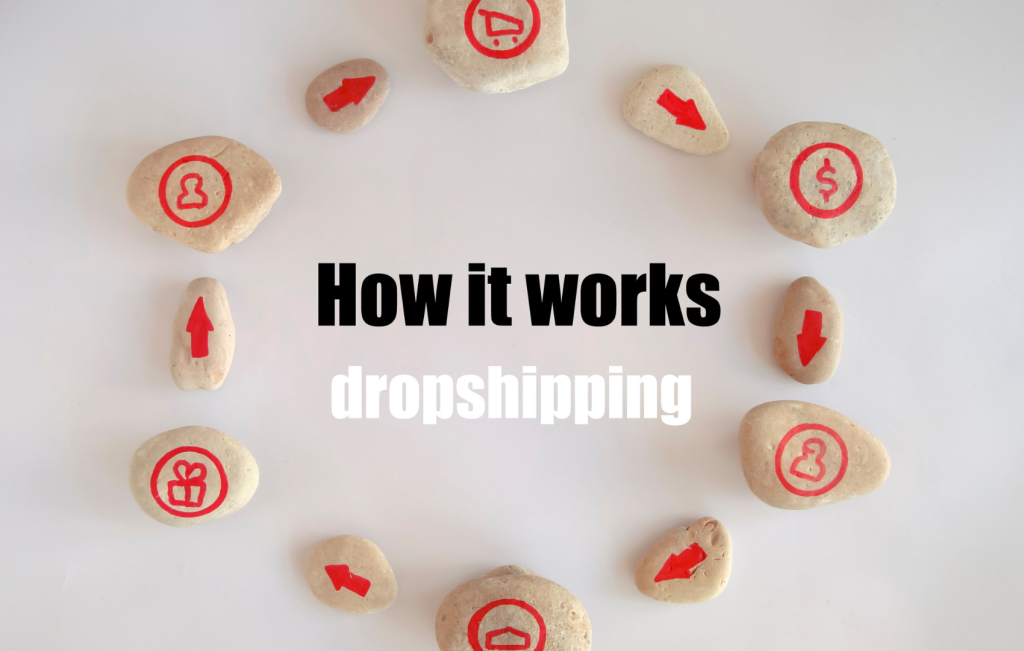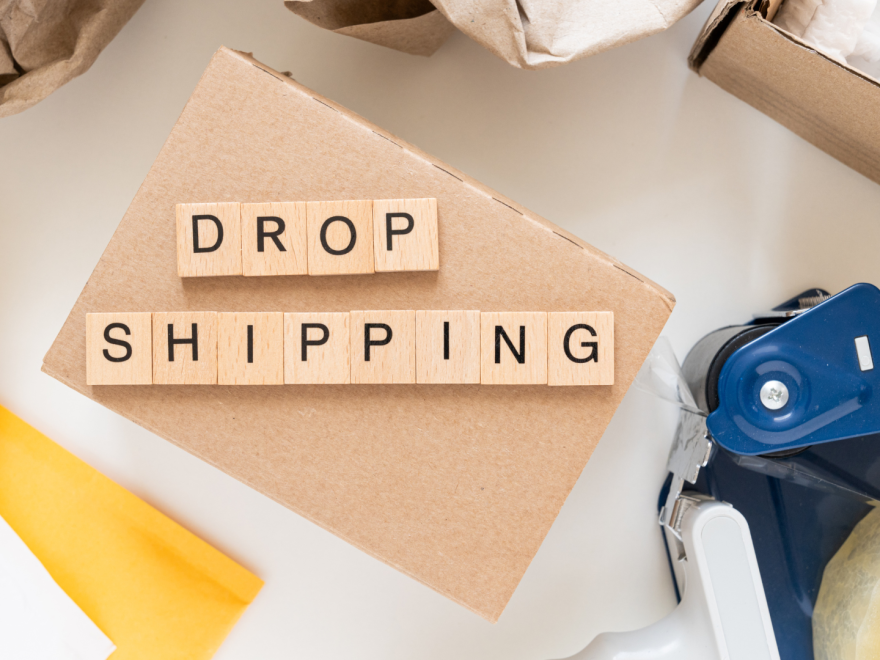Dropshipping is a retail fulfillment method where a store doesn’t keep the products it sells in stock. Instead, when a store sells a product, it purchases the item from a third-party supplier, who then ships it directly to the customer. This means that the seller doesn’t handle the product directly, and it significantly reduces the financial risk of maintaining inventory. In today’s article we will talk about how dropshipping works and how to start a dropshipping business.
Table of Contents
How Dropshipping Works and How to Start a Dropshipping Business?
Setup Your Online Store:
You create an e-commerce store (using platforms like Shopify, WooCommerce, etc.) and list products you want to sell.
Find Suppliers:
You partner with suppliers (often through platforms like Oberlo, AliExpress, or other dropshipping directories) who will fulfill orders on your behalf.
Customer Places an Order:
A customer visits your online store, browses products, and places an order, paying you the retail price.
Forward the Order to the Supplier:
You receive the order details and payment. You then forward the order information to the supplier, usually paying them the wholesale price.
Supplier Ships the Product:
The supplier processes the order and ships the product directly to the customer, often using your store’s branding.
Customer Receives the Product:
The customer receives the product without ever knowing that it was shipped directly from the supplier.
Key Benefits of Dropshipping
- Low Startup Costs: You don’t need to invest in inventory upfront, making it easier to start with limited capital.
- Wide Product Selection: You can offer a variety of products without the need to store them physically.
- Flexibility: You can run your business from anywhere with an internet connection.
- Reduced Risk: Since you don’t purchase products until after a sale is made, there’s less financial risk involved.
Challenges of Dropshipping
- Lower Profit Margins: Competition can drive prices down, leading to lower profit margins.
- Supplier Issues: Relying on suppliers means you have less control over inventory levels, shipping times, and product quality.
- Shipping Complications: Managing shipping from multiple suppliers can lead to increased shipping costs and longer delivery times for customers.
- Customer Service: Handling returns and customer complaints can be more challenging since you don’t control the product quality or shipping.
Overall, dropshipping can be a viable business model for entrepreneurs looking to enter the e-commerce space with lower upfront costs and risks, but it requires careful planning, supplier management, and marketing strategies to succeed.

Starting a dropshipping store involves several key steps. Here’s a comprehensive guide to help you get your business up and running:
Step 1: Choose a Niche
- Identify Your Interests: Select a niche that you are passionate about or have some knowledge of.
- Research Market Demand: Use tools like Google Trends, keyword research, and social media to evaluate the demand for products in your niche.
- Consider Profitability: Look for products with good profit margins and low competition.
Step 2: Analyze Competitors
- Research Existing Stores: Check out competitors in your niche. Analyze their products, pricing, and marketing strategies.
- Identify Gaps: Look for opportunities where you can differentiate your store from others.
Step 3: Choose a Business Name and Domain
- Create a Memorable Name: Pick a unique and relevant name for your store.
- Register Your Domain: Use services like GoDaddy or Namecheap to purchase a domain that matches your store name.
Step 4: Set Up Your E-commerce Platform
- Select a Platform: Choose an e-commerce platform like Shopify, WooCommerce, or BigCommerce.
- Sign Up: Create an account and start your free trial if available.
- Select a Theme: Choose a professional theme that suits your niche and customize it to reflect your brand.
Step 5: Install a Dropshipping App
- Find a Dropshipping App: If using Shopify, install Oberlo or DSers; for WooCommerce, consider AliDropship or Spocket.
- Connect Your Store: Follow the instructions to connect the app to your store.
Step 6: Find and Add Products
- Browse Products: Use your dropshipping app to find products in your niche.
- Evaluate Suppliers: Choose reliable suppliers with good ratings and shipping times.
- Add Products: Import selected products to your store, customizing titles, descriptions, and pricing as needed.
Step 7: Set Up Payment and Shipping
- Payment Gateways: Set up payment options like PayPal, Stripe, or Shopify Payments in your store settings.
- Shipping Settings: Define shipping rates and methods based on your suppliers’ options.
Step 8: Create Essential Store Pages
- About Us: Share your brand story and mission.
- Contact Us: Provide a way for customers to reach you.
- FAQ: Address common questions about shipping, returns, and product details.
- Policies: Create pages for privacy policy, return policy, and terms of service.
Step 9: Optimize for SEO
- Keyword Research: Identify relevant keywords for your products and niche.
- Optimize Listings: Use keywords in product titles, descriptions, and meta tags.
- Blogging: Consider adding a blog to share content related to your niche, which can help with SEO.
Step 10: Launch Your Store
- Test Everything: Ensure that all links, payment processes, and shipping options work correctly.
- Remove Password Protection: If applicable, disable any password protection to go live.
Step 11: Market Your Store
- Social Media Marketing: Create profiles on platforms relevant to your audience (Instagram, Facebook, TikTok).
- Email Marketing: Build an email list and send out newsletters, promotions, and updates.
- Paid Advertising: Use Facebook Ads, Google Ads, or influencer marketing to drive traffic to your store.
Step 12: Monitor and Optimize
- Track Performance: Use analytics tools to monitor traffic, sales, and customer behavior.
- Customer Feedback: Encourage reviews and gather customer feedback to improve your offerings.
- Refine Strategies: Be flexible and adjust your marketing and product strategies based on performance data.
Step 13: Provide Excellent Customer Service
- Support Channels: Offer customer support through email, live chat, or social media.
- Timely Responses: Address inquiries and issues promptly to enhance customer satisfaction.
Starting a Dropshipping Business – Final Thoughts
Building a successful dropshipping store requires dedication, ongoing learning, and adaptability. By focusing on customer experience, effective marketing, and continuous improvement, you can create a thriving online business.
How you enjoy this article on how to start a dropshipping business. If you have any more specific questions or need further guidance on any topic, feel free to contact us!

